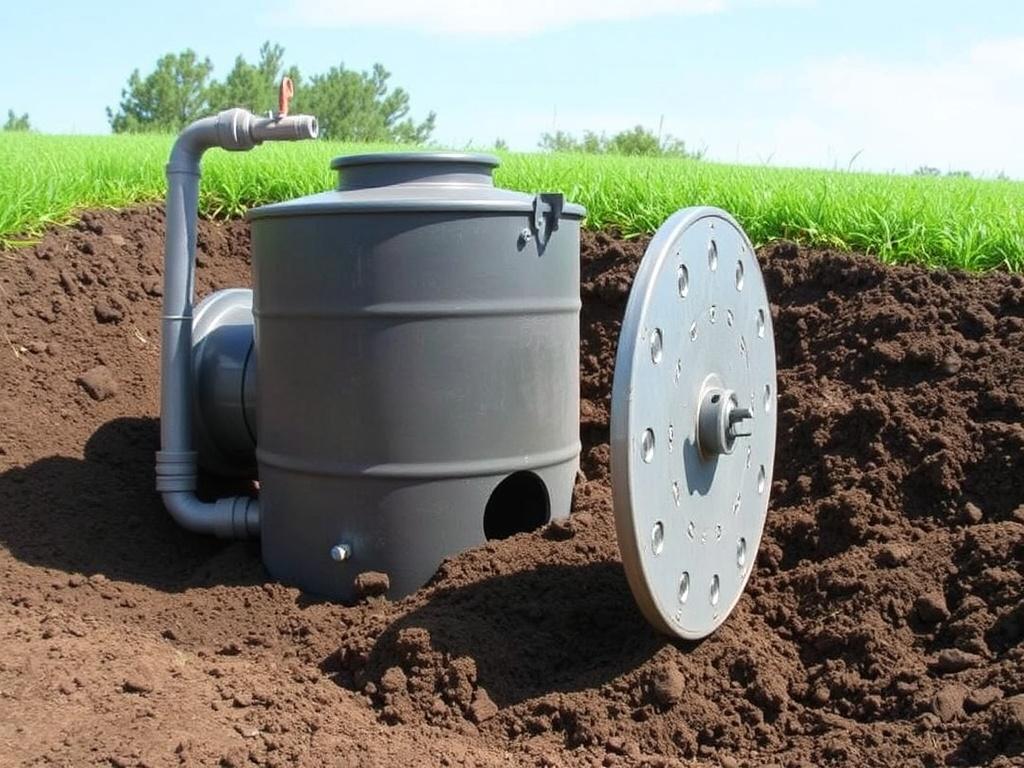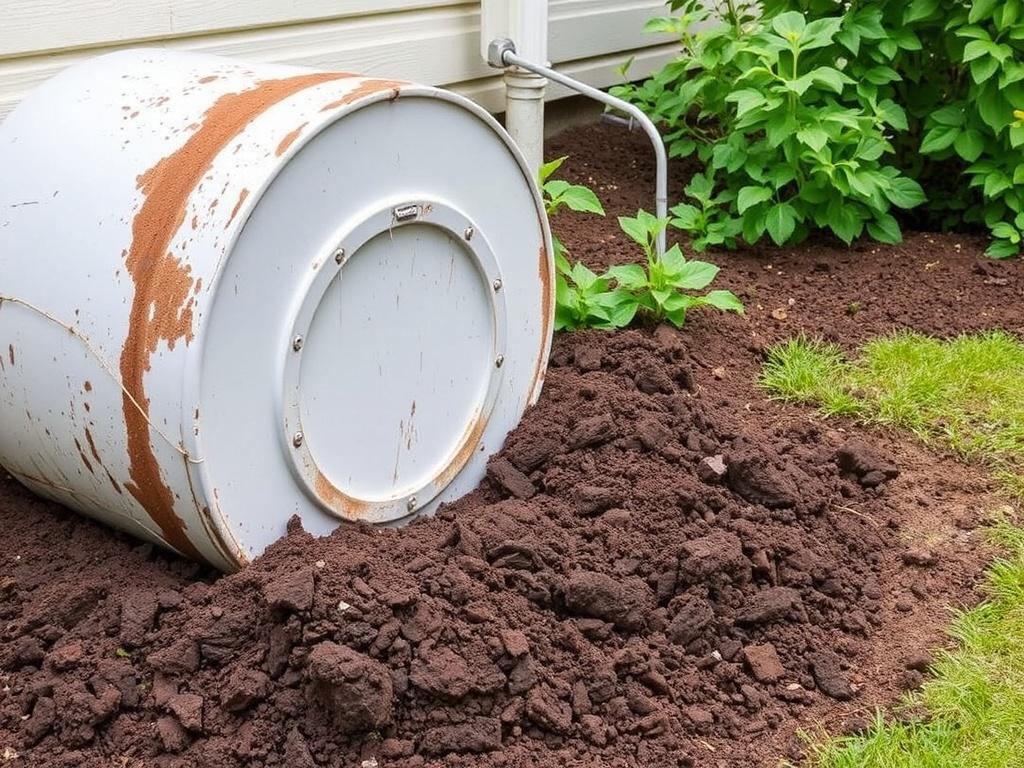Septic tank sludge can be a major headache for homeowners, yet it’s often an overlooked aspect of septic system maintenance. Understanding how to deal with septic tank sludge effectively can save you from costly repairs and unpleasant experiences. Whether you’re a new homeowner or looking to improve your septic tank care routine, this guide will walk you through everything you need to know about septic tank sludge—what it is, why it’s important to manage it, and the best ways to keep your septic system running smoothly. Let’s dive into the details so that you can handle septic sludge with confidence.
- What Is Septic Tank Sludge?
- Why Is Managing Septic Tank Sludge Important?
- How to Know When Your Septic Tank Needs Pumping
- Signs Your Septic Tank Sludge Needs Attention
- Recommended Pumping Intervals
- How to Properly Pump Septic Tank Sludge
- The Pumping Process Explained
- Tips for Hiring a Reliable Pumping Service
- Preventing Excessive Septic Tank Sludge Buildup
- What to Avoid
- Helpful Habits to Adopt
- Septic Tank Additives: Do They Help with Sludge?
- Emergency Solutions When Septic Tank Sludge Causes Problems
- Steps to Take Immediately
- Long-Term Septic Tank Maintenance Planning
- Key Components of a Maintenance Plan
- Additional Tips for Healthy Septic Tank Operation
- Summary Table: Do’s and Don’ts of Septic Tank Sludge Management
- Resources for Septic Tank Owners
- Conclusion
What Is Septic Tank Sludge?
Before tackling the problem, it’s essential to understand what septic tank sludge actually is. A septic tank is an underground chamber that processes wastewater from your home. Inside the tank, solids settle at the bottom, forming a dense layer called sludge. Above the sludge is the liquid effluent, while the scum layer floats on top.
Over time, septic tank sludge accumulates as more solids enter the tank through everyday use—things like human waste, food scraps, and soap residue. The sludge doesn’t decompose quickly, so it builds up and takes up space that your septic system needs to operate effectively. If left unaddressed, this sludge layer can cause blockages, drain field damage, and eventually lead to septic system failure.
Why Is Managing Septic Tank Sludge Important?

Most homeowners don’t think about septic tank sludge until there’s a clear problem, such as backups, odors, or slow drains. However, proactive septic tank sludge management is crucial for several reasons:
- Prevents backups and overflows: Excess sludge reduces tank capacity, causing wastewater to back up into your home or yard.
- Protects the drain field: When sludge overflows into the drain field, it clogs the soil and disrupts natural filtration, which can be expensive to repair.
- Extends the life of your septic system: Regular sludge maintenance keeps everything running efficiently, delaying costly replacements.
- Reduces environmental impact: Proper sludge management prevents contamination of groundwater and surrounding ecosystems.
How to Know When Your Septic Tank Needs Pumping
One of the most common questions about septic tank sludge is: “How do I know when my tank needs to be pumped?” There are indicators to watch for, along with guidelines to help you schedule maintenance before problems occur.
Signs Your Septic Tank Sludge Needs Attention
Here are some warning signs that sludge buildup is becoming an issue:
- Slow drains: If sinks, tubs, or toilets are draining slowly, sludge may be obstructing the flow.
- Foul odors: Persistent sewage smells around your yard or near the septic tank access point indicate sludge-related problems.
- Pooling water or muddy soil: Excess sludge can cause effluent to surface, creating soggy patches above the drain field.
- Backups in plumbing fixtures: Wastewater backing up inside the home is a serious sign of sludge accumulation.
Recommended Pumping Intervals
While usage and tank size influence how often septic tank sludge needs to be removed, here are general guidelines:
| Household Size | Septic Tank Size (Gallons) | Recommended Pumping Frequency |
|---|---|---|
| 1-2 people | 750-1,000 | Every 3-5 years |
| 3-4 people | 1,000-1,250 | Every 2-3 years |
| 5+ people | 1,250+ | Every 1-2 years |
Remember, these are rough estimates. Regular inspection by professionals is key to determining the exact need for sludge pumping.
How to Properly Pump Septic Tank Sludge

Pumping your septic tank sludge is not a DIY task for most homeowners, but understanding the process will help you know what to expect and ensure it’s done right.
The Pumping Process Explained
1. Locate and access the septic tank: Professionals find the tank’s access port, usually marked or noted on site plans.
2. Inspect the tank: Before pumping, they may inspect the sludge and scum levels to check the tank’s condition.
3. Use a vacuum truck: A specialized vacuum truck pumps out the sludge, scum, and liquid effluent from the tank.
4. Clean the tank if needed: Some service providers will also flush the tank to remove remaining solids.
5. Proper transportation and disposal: The sludge must be transported to an approved treatment or disposal facility.
Tips for Hiring a Reliable Pumping Service
Finding a trustworthy septic pumping company ensures the job is done safely and thoroughly. Here’s what to look for:
- Licensed and insured technicians
- Good reviews and references
- Transparent pricing and written estimates
- Proper disposal protocols for sludge
- Experience with local septic systems
Preventing Excessive Septic Tank Sludge Buildup
While regular pumping is necessary, you can take steps to reduce sludge accumulation by modifying your household habits and septic system usage.
What to Avoid
Some materials and behaviors can accelerate sludge buildup:
- Flushing non-biodegradable items: Avoid flushing wipes, diapers, sanitary products, and other trash even if labeled “flushable.”
- Using harsh chemicals: Excessive bleach, drain cleaners, and antibacterial soaps kill helpful bacteria that break down sludge.
- Pouring fats and oils down drains: Grease hardens and settles as solids, increasing sludge volume.
Helpful Habits to Adopt
On the flip side, these practices help reduce sludge buildup:
- Use water efficiently: Fix leaks, install low-flow fixtures, and avoid excessive water usage.
- Dispose of cooking oils properly: Pour fats into containers and throw them in the trash.
- Use septic-safe products: Choose biodegradable and low-phosphate cleaning agents.
- Maintain your system: Schedule routine inspections and pumping, and avoid unnecessary heavy loads.
Septic Tank Additives: Do They Help with Sludge?
Septic tank additives claim to reduce sludge buildup by breaking down solids or enhancing bacterial activity. But are these products effective?
Many experts are skeptical. Here’s a quick look at their pros and cons:
| Septic Tank Additives | Potential Benefits | Drawbacks |
|---|---|---|
| Enzyme-based additives | May speed up organic matter breakdown | Effect often temporary; does not replace pumping |
| Bacterial additives | Introduce bacteria to help digest sludge | Natural bacteria already exists; limited impact |
| Chemical additives | Claim to dissolve solids quickly | Can harm drain field, kill bacteria; not recommended |
Overall, septic tank sludge additives are not a substitute for regular pumping. Use them cautiously and always consult septic professionals.
Emergency Solutions When Septic Tank Sludge Causes Problems
If sludge buildup leads to an urgent problem like a backup or flooding, prompt action can minimize damage.
Steps to Take Immediately
- Stop using water to prevent further backups.
- Contact a septic service technician for emergency pumping and inspection.
- Avoid driving or parking over the septic drain field to prevent soil compaction.
- Use portable plumbing solutions temporarily if necessary.
- Address any environmental contamination swiftly.
By acting fast, you can avoid costly repairs and health hazards.
Long-Term Septic Tank Maintenance Planning
Dealing with septic tank sludge isn’t a one-time chore; it’s an ongoing responsibility. Developing a long-term maintenance plan helps you stay on top of sludge management and protect your investment.
Key Components of a Maintenance Plan
- Regular inspections: Schedule a professional checkup every 1-3 years.
- Routine pumping: Follow recommended intervals based on usage and tank size.
- Record keeping: Keep detailed logs of pumpings, inspections, and any repairs.
- Educate household members: Ensure everyone understands what can and cannot go down the drains.
- Address repairs immediately: Fix any leaks or damage before they worsen sludge problems.
Additional Tips for Healthy Septic Tank Operation
Consider these extra tips to complement your sludge management efforts:
- Plant trees and shrubs away from the drain field to avoid root intrusion.
- Use biodegradable toilet paper to reduce solids.
- Monitor water softener backwash to ensure it does not overwhelm the system.
- Install risers for easier septic tank access during inspections and pumping.
- Avoid parking heavy vehicles on the septic field to prevent soil compaction.
Summary Table: Do’s and Don’ts of Septic Tank Sludge Management
| Do’s | Don’ts |
|---|---|
| Schedule regular septic pumping | Flush non-biodegradable items |
| Conserve water to reduce sludge buildup | Pour grease or fats down the drain |
| Use septic-safe cleaning products | Overuse antibacterial cleaners and bleach |
| Hire licensed septic professionals | Ignore warning signs of sludge accumulation |
| Keep detailed maintenance records | Attempt hazardous DIY sludge removal |
Resources for Septic Tank Owners
If you want further guidance on septic tank sludge and maintenance, here are some helpful resources:
- EPA Septic Systems Guide
- InspectAPedia Septic System Maintenance
- National Environmental Services Center
- Your local health or environmental agency website
Conclusion

Dealing with septic tank sludge is a vital part of maintaining a healthy and efficient septic system. Knowing what septic tank sludge is and why it matters empowers you to take action before problems arise. Regular pumping, mindful household habits, and working with experienced professionals are the cornerstones of effective sludge management. While septic tank additives may offer some help, they cannot replace proper maintenance routines. Being attentive to signs of sludge buildup and having a structured long-term care plan can save you a significant amount of time, money, and stress. Ultimately, a well-maintained septic tank ensures a safe home environment and protects the surrounding ecosystem for years to come.
Помогла вам статья?






